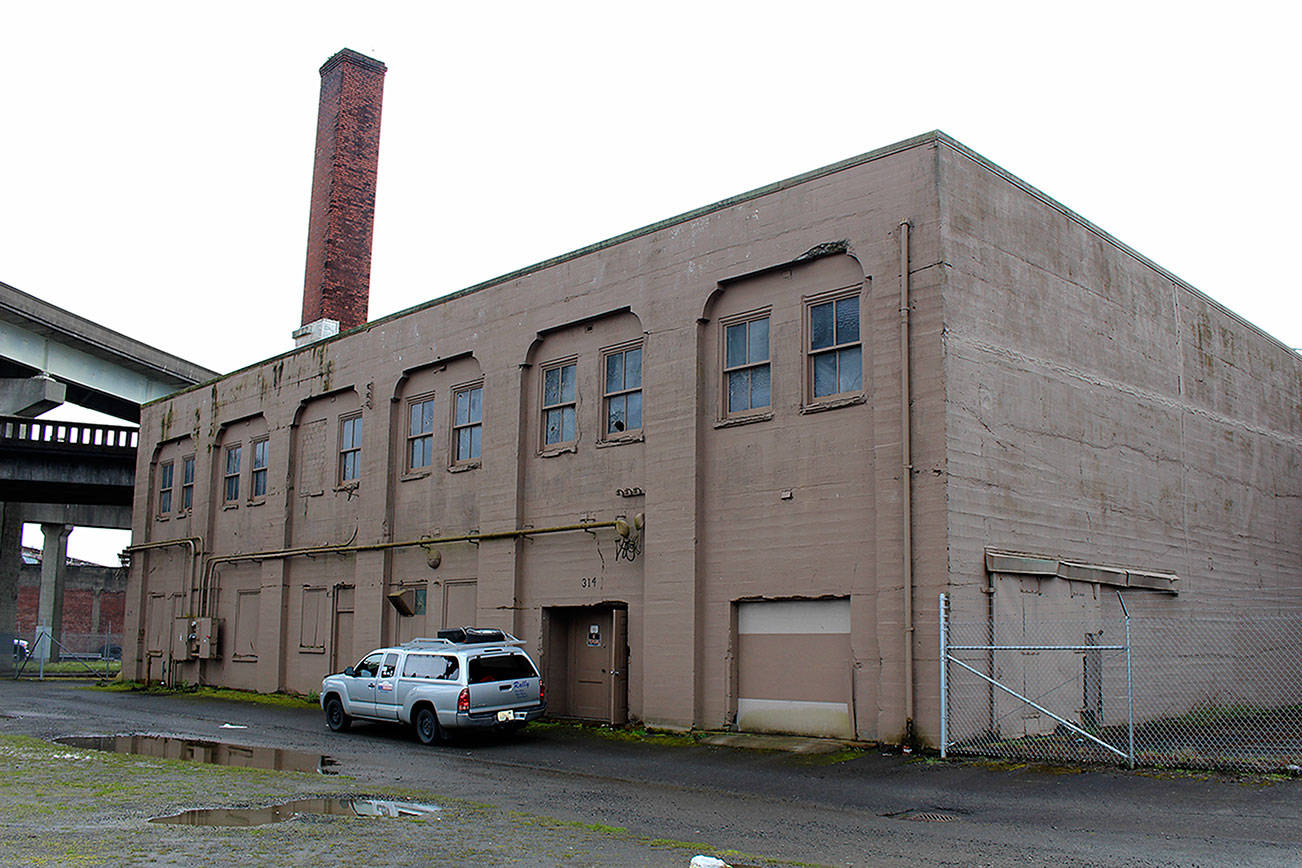The one-year anniversary of Aberdeen’s Armory Building fire is this Sunday — a year since much of the city’s history went up in literal smoke. City and museum officials are committed to rebuilding. Although there’s still no guarantee where a rebuilt museum would be housed, the city’s Board of Museum and History, formed in the wake of the fire, has shown interest in possibly relocating some of the museum to what is known as the Boeing Building, just south of the downtown core, to act as a home base.
At Tuesday’s board meeting, the eight members approved a recommendation for the Aberdeen City Council to approve a “request for proposal” and contract with a company to do a feasibility study on the two-story building, which is privately owned by Larry Goldberg of Aberdeen and appears to be vacant, to see if it could be used to house the museum and its archives. The building is close to the large riverfront homeless camp and the once-a-week syringe exchange, and council member Jeff Cook, who serves on the board, said it could be a catalyst to redevelopment of the city’s waterfront area. It is near the confluence of the Wishkah and Chehalis rivers.
“That could be the home base; it could be the anchor toward developing the waterfront,” said Cook, who added that when the board toured the building recently, members were impressed with the space.
The building sits near the Chehalis River Bridge overpass leading to South Aberdeen. It’s a couple blocks from the two main roads through town. The building was used by Boeing during World War II, where gun turrets were manufactured for B-17 bomber planes.
When asked during the meeting if the location was a concern to the board, multiple members said they view the museum as a potential starting point toward redeveloping the waterfront area and cleaning it up.
John Shaw, the vice chairman of the board, added that the group was “interested in taking back that section of town.”
“I’ve been here 32 years, and we’ve been talking about developing F Street and developing the waterfront that whole time,” said Shaw. “The museum could be an important piece of that.”
Shaw said he views the Boeing Building as a potential base of operations for the museum, where all of its collection could be stored, as well as a potential site for some museum exhibits. But he said his vision would be for smaller museum installations at multiple points of engagement, such as a redeveloped Morck Hotel or the planned Gateway Center.
“It’s not as simple as, ‘We think the museum should be at the Boeing Building,’” said Shaw.
The Board of Museum and History, which was newly formed in September and is city-run after it was inactive for years, consists of eight volunteer members who live in the area and were selected based on their passion for local history and are tasked with helping guide the city on creation of a future museum. It’s led by chairman Les Bolton, former executive director of the Grays Harbor Historical Seaport. The city-run museum board took the place of the Friends of the Museum, an independent group of volunteers that is still active but now mostly handles fundraising.
Bolton spoke afterward about how he liked how spacious the building is, the historic feel of the inside, and that it has a sprinkler system already installed.
“It’s got good history, and you go into the building and can sense something big happened here,” said Bolton.
Mayor Erik Larson, who attended the meeting, said things the feasibility study would hopefully identify include: whether it can fit the museum exhibits, along with archive space for all the other artifacts and documents, and whether the building itself is usable.
The board was unanimous in liking the idea of using the Boeing Building, aside from Jamie Brand who said she’s concerned about a crack running from the ceiling to floor on the second floor.
Bolton said the board considered seven or eight different buildings, with the Odd Fellows Building (which now houses the Windemere Real Estate office and former Chase Bank); and the Kaufman Scroggs building being other potential location finalists that the board was less in support of.
At the meeting, the board also heard from Matthew Coates, President of Coates Design Architects, the company working on the planned Gateway Center for Aberdeen. He updated the board on the current plans for how the center will look, and explained that there could be some room for museum exhibits on the first floor of the building. Shaw said the board was interested in getting some exhibit space in the Gateway Center and said it would be helpful to have someone at the center point visitors to the museum.



